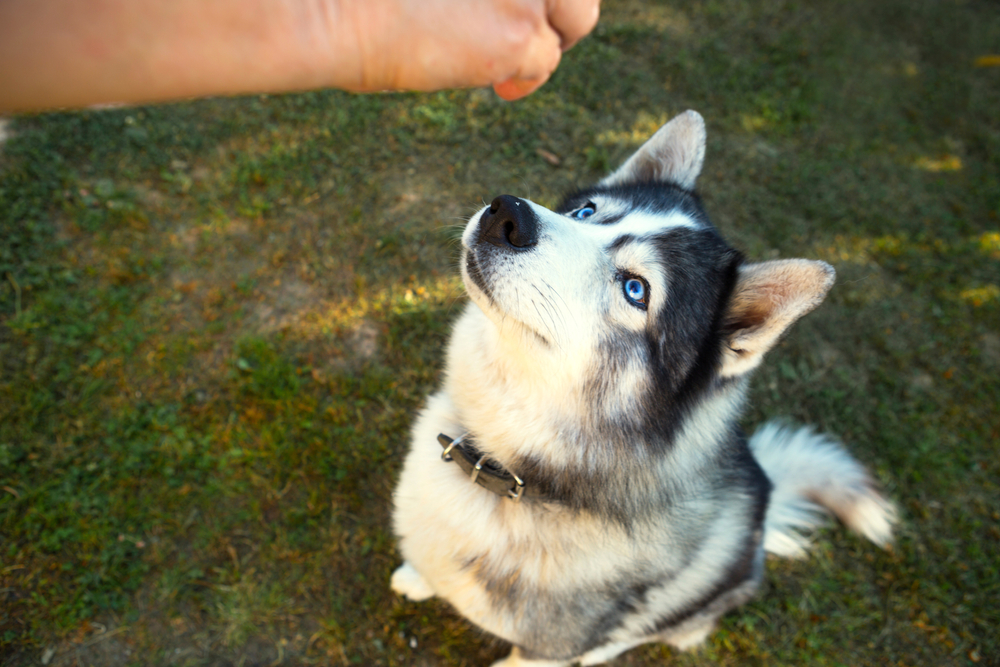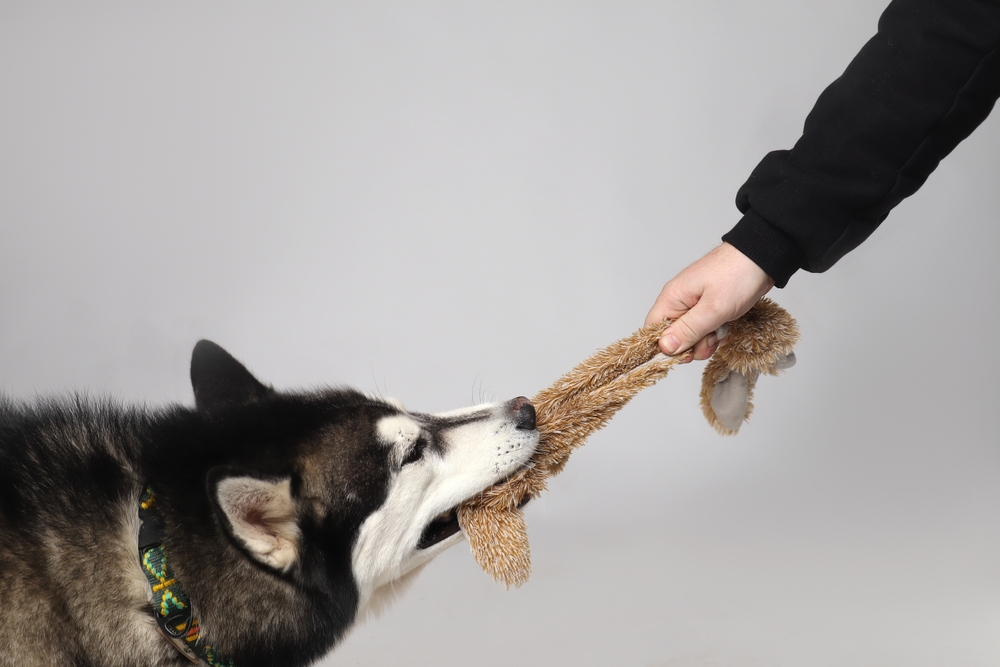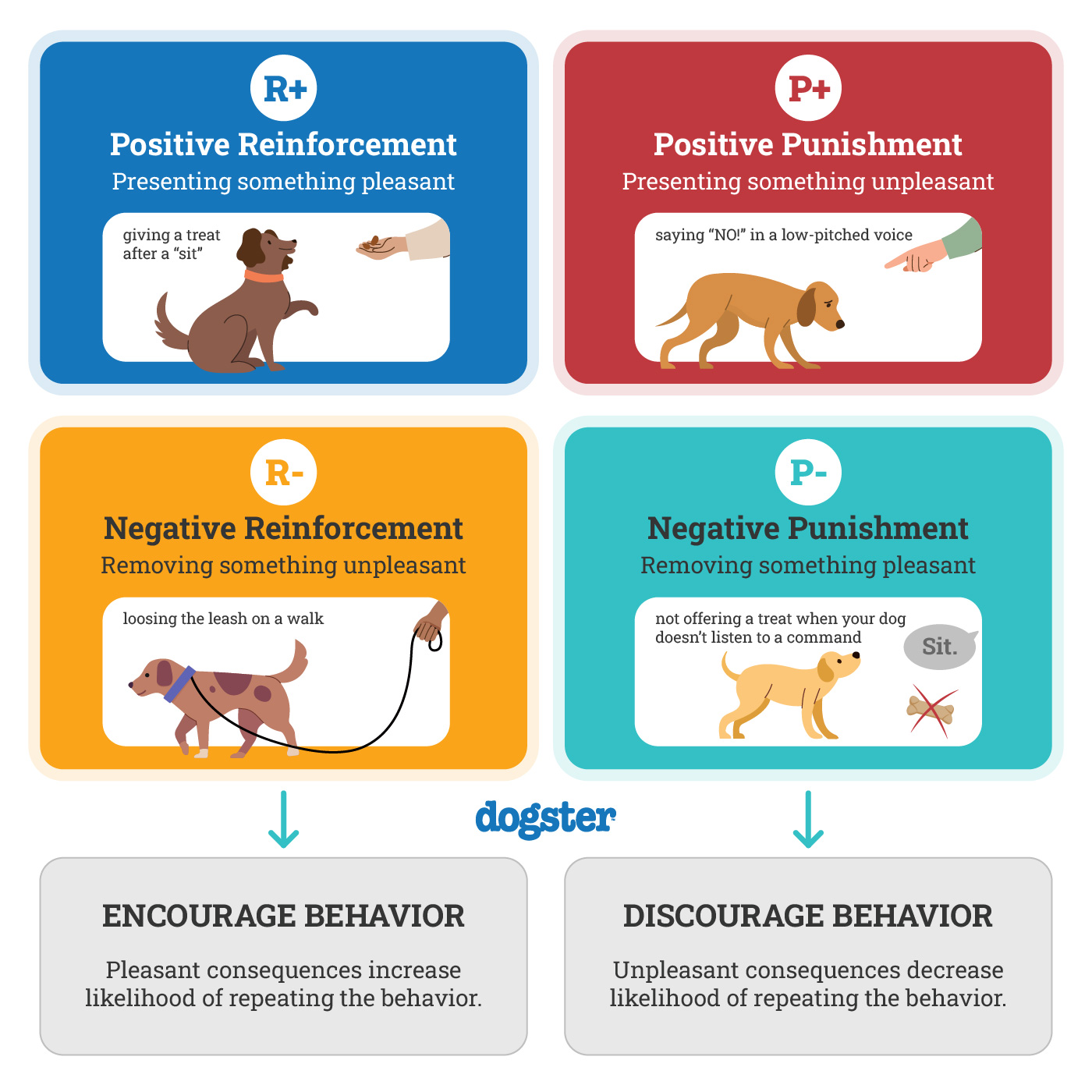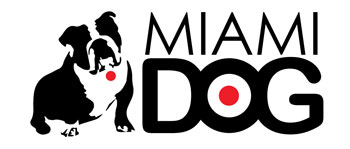The Siberian Husky’s joyous energy and unconditional friendliness make them one of the most delightful dogs to own, but any pet parent can tell you how challenging they can be to train. Huskies were born to run, boasting an intellect, strong will, and independent spirit that are tricky to manage in the home with approaches that work for other breeds.
Does that mean Huskies are impossible to train? While you may have to lower your expectations (these dogs are rarely obedience champions), a few areas of focus and some savvy moves will make life exponentially easier. Create a better routine today with these tips and tricks to train a Husky.

The 7 Vet-Approved Tips and Tricks to Train a Husky
1. Find an Amazing Motivator
Huskies are goal-oriented. While we often find them stubborn or unruly, they make decisions to get what they want in a way that works for them. Knowing this, we can find what motivates our Huskies the most, letting us use their intelligence and knack for independent decision-making to guide them toward what we need them to do.
Many Huskies are picky eaters, but if your dog is food-motivated, find the treats that get them excited and easier to lead. You can discover the most high-value rewards by putting a few options together, letting your dog loose, and seeing which one they go for first.

Test Your Rewards
Get creative! Huskies have unique tastes, and as long as it’s dog-friendly (e.g., no chocolate), anything from bits of cheese to raw vegetables is worth testing out on your pup. A treat often isn’t the best reward for a Husky, though.
They are excitable, fun-loving, and prey-driven, so sometimes a toy or the anticipation of playing their favorite game motivates them the most. Once you find that irresistible treat, item, or activity, you have a solid goal to give them as motivation for following your training direction.
2. Make Positive Reinforcement Training Fun
For many dogs, the command-action-treat chain of events is a straightforward way to train. You ask your dog to sit, they comply, and you mark the behavior before offering a food reward.
Unfortunately, this simple method has a few limitations when used to train a Husky. This breed is usually less food-driven than most other dogs and has a limited tolerance for training when it gets boring.
Bring energy and excitement to your training sessions. Always use positive reinforcement rather than punishment, and be unwaveringly upbeat and lively with your Husky. They have endless energy, and if you match that during training, you’ll keep their focus more effectively.
3. Use Your Husky’s Prey Drive for Training
Your rewards should be as exciting as your verbal and body language. A treat may not keep your Husky motivated to train, but the prospect of play is often more than enough to get them to cooperate.
Consider how you might teach a recall. Rather than call your dog and supply a treat when they return, offer a fun activity that taps into their heightened prey drive to make recall truly rewarding and enjoyable.
For example, toss a treat in your dog’s line of sight, and tell them to find it. Then, you can present another treat and call their name or issue a recall cue. When they return to you, reward them by tossing the treat away and having them find it again. As you repeat this, your Husky will learn that returning to you gets them a treat and a game to play.
Alternatively, you can find a prey-like furry toy and use it intermittently with food treats as a reinforcer for requested behaviors. This will exponentially increase your reinforcement opportunities while keeping your Husky on a healthy calorie limit. Make sure the toy is safe for your pup, and supervise their interactions. Limit its availability; use it only as a reinforcer to maintain its high value for your pup.

4. Utilize the Premack Principle
The Premack Principle states that a high-probability behavior (something the dog wants) can reinforce a low-probability behavior (something that doesn’t inherently motivate the dog). In a Husky’s case, a high-probability behavior may be to chase a thrown squeaky toy, while a low-probability behavior may be to perform a sit/stay.
You can use this by combining positive reinforcement with negative punishment in non-aversive ways that tap into the breed’s inherent drives. Huskies want to run, pull, chase, and play, giving you plenty of possible reward opportunities for their behavior.
You can cue them to stay next to you when training loose-leash walking. Once they comply and perform the desired behavior, you can reward them by letting them jog with you, using another cue like, “Let’s run!” to differentiate the two actions.
Using Negative Punishment
Alternatively, you can create a training setup that features a visible reward at the end. For example, if play motivates your Husky, you can have their favorite family members playing at one end of your yard while you keep your dog on a leash at the other. You can walk toward the other family members only if your dog maintains a loose leash.
Your Husky will likely pull out of excitement and instinct (this breed was developed to pull and run away from their handler while hauling a sled). When this happens, walk backward and away from the reward until your dog loosens the leash. With the leash loose, you can continue walking forward until they tighten the leash again, at which point, you move back.
Repeat this process of offering forward motion for a loose leash and backward motion for a taut leash. Eventually, your dog will learn that the loose leash is their ticket to what they want.
5. Train Impulse Control
The Premack Principle can come into play in several places to help you train your dog to follow your lead and control their immediate impulses. You can reward calm, compliant behavior with whatever your dog is excited to receive.
You can use this when you feed your Husky, take them for a walk, or let them out of their crate. For example, you can put your dog in a “sit” position and command them to wait as you open the door to go for a jog. If they get up before you tell them to, you close the door and start from square one until they successfully wait until you cue them to go.
The critical aspect here is that you keep your dog in control. You aren’t luring; you’re using the positive reinforcement of a walk to reward good behavior and the negative punishment of withholding the walk when they prematurely rise.

Training Game: “It’s Your Choice”
The “It’s Your Choice” game is a classic example of impulse control training. In this game, you present a treat in a closed hand and allow your dog to sniff at it but not receive it. When they back away, you can open your hand. Your Husky will most likely immediately go for the now-exposed treat. If they do, you immediately close your hand.
Continue this practice, and eventually, your dog will back off, you’ll open your hand, and your dog will stay frozen, looking at your hand or you but not going for the treat. If your Husky resists the urge to go for the treat in your open hand, you can give them the treat and praise.
6. Use Play to Bond and Reward Your Husky
With the Premack Principle in mind, you have a powerful tool to gain cooperation while retaining your dog’s sense of independence. You’re letting them make decisions that work in your mutual best interest, a crucial aspect in making training efficient and enjoyable.
By making play part of the deal, you can shape behaviors as they happen and reinforce them at the end. For instance, you can use a cue for them to run with you if you need to head back to the car after a vet visit or come inside after spending time in the backyard.
Once inside, the play can continue to reward them and show that another prize comes with their cooperation. In doing so, they won’t feel like returning to the car or the house is the end of the fun, making them more likely to comply.
7. Be Consistent in Your Routine, Boundaries, and Rewards
As with any dog, it’s critical to ignore the behaviors you don’t like and reinforce those you do. Don’t let your dog find satisfaction in breaking the rules. Offer gentle corrections with a simple “no,” and support their decisions to stay calm and follow the rules with tasty treats and play.
Look for opportunities to reward your Husky throughout the day, and ensure that everyone in the house knows what behaviors to promote so there’s no confusion.

Final Thoughts
Training a Husky takes intuition, awareness, and a healthy amount of creativity. The usual rules don’t apply to a breed that thrives when given room to make their own decisions and operate in a way that rarely meshes with good household manners. If you can tap into their instincts to guide your dog’s choices and give them a sense of agency, you’ll enhance your bond and find daily fulfillment in training your Husky, no matter the challenges.
Featured Image Credit: Edalin Photography, Shutterstock

